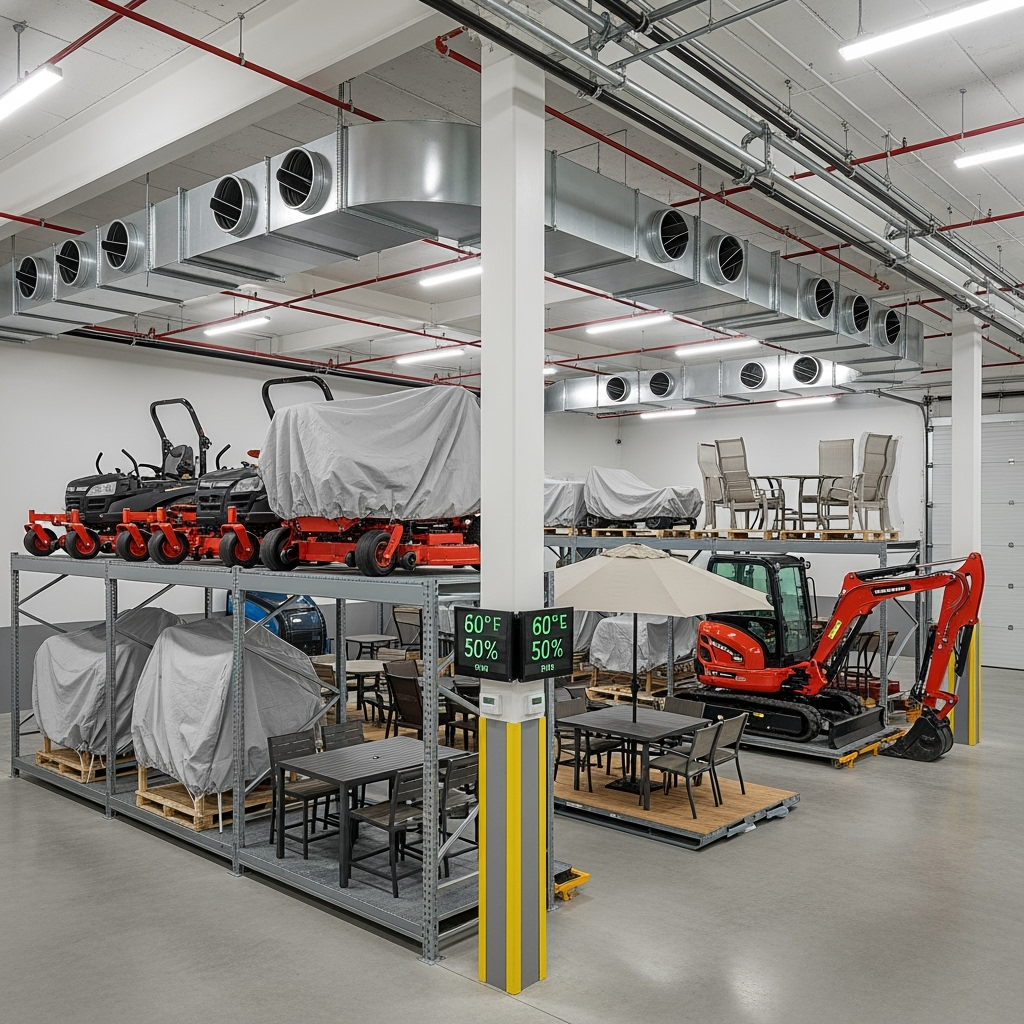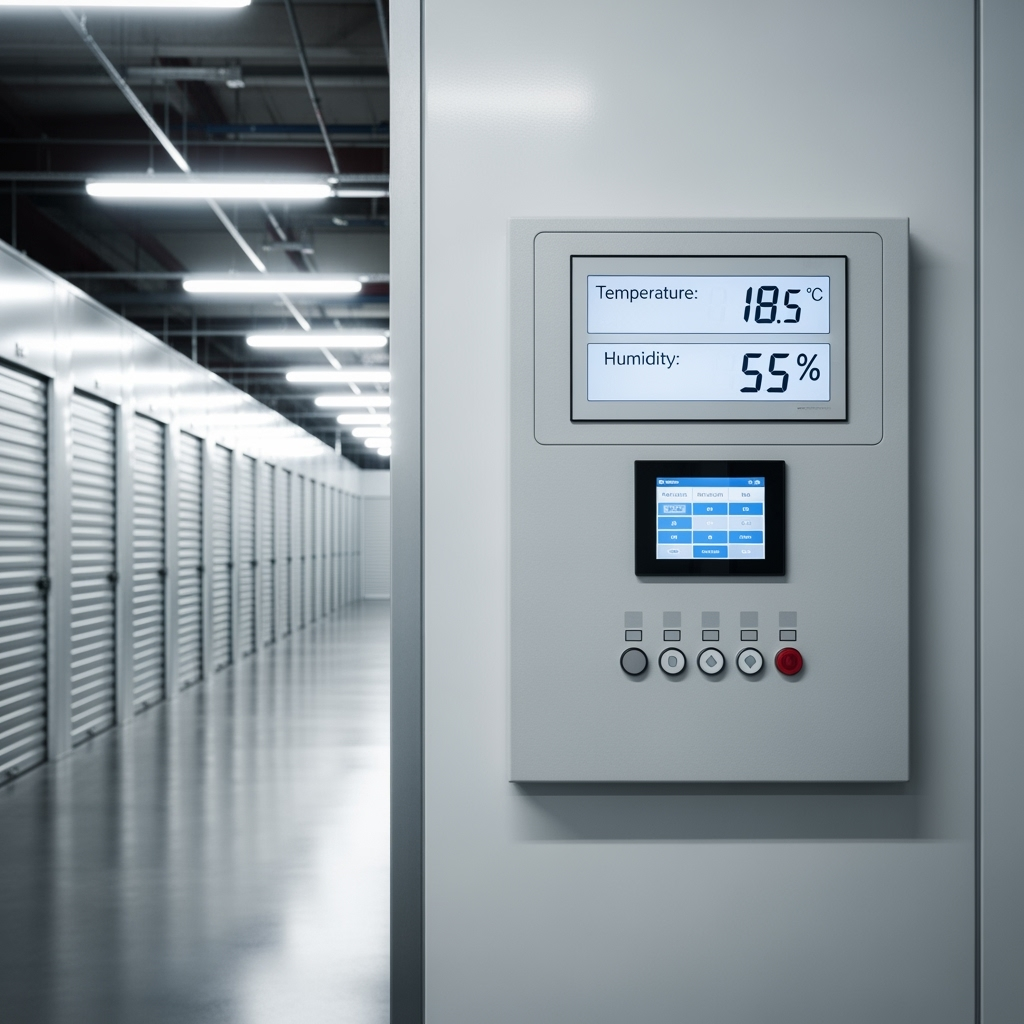Understanding Temperature Control for Outdoor Business Equipment
For businesses relying on outdoor equipment, proper storage is crucial for maintaining equipment longevity and protecting your investment. This comprehensive guide will help you understand the importance of temperature-controlled storage and how to implement effective storage solutions for your outdoor business equipment.

Why Temperature Control Matters for Outdoor Equipment
Temperature fluctuations can significantly impact outdoor equipment through:
- Metal expansion and contraction
- Rubber and plastic deterioration
- Battery performance degradation
- Moisture-related corrosion
- Fuel system issues
Ideal Storage Conditions for Different Equipment Types
Different types of outdoor business equipment require specific storage conditions:
Landscaping Equipment
- Temperature range: 50-80°F
- Humidity level: 30-50%
- Protection from direct sunlight
- Proper ventilation
Construction Equipment
- Temperature range: 45-85°F
- Low humidity environment
- Protection from moisture
- Regular air circulation

Setting Up Your Climate-Controlled Storage Space
Essential components for effective temperature-controlled storage include:
Temperature Monitoring
- Install digital thermometers
- Use remote monitoring systems
- Set up temperature alerts
- Maintain consistent readings
Humidity Control
- Use dehumidifiers when needed
- Monitor moisture levels
- Ensure proper ventilation
- Address condensation issues
Best Practices for Equipment Storage
Pre-Storage Preparation
- Clean equipment thoroughly
- Perform maintenance checks
- Empty fuel tanks or add stabilizer
- Disconnect batteries
- Apply protective coatings
Organization and Access
- Create inventory system
- Maintain clear access paths
- Use proper storage racks
- Label equipment clearly
- Document storage locations
Seasonal Considerations
Adjust your storage strategy based on seasonal changes:
Summer Storage
- Enhance cooling systems
- Monitor for extreme heat
- Increase ventilation
- Check equipment more frequently
Winter Storage
- Maintain minimum temperature
- Prevent freezing damage
- Monitor humidity levels
- Protect against condensation
Monitoring and Maintenance
Regular monitoring ensures optimal storage conditions:
- Weekly temperature checks
- Monthly equipment inspection
- Quarterly storage space assessment
- Annual system maintenance
- Emergency response plan
Long-Term Storage Benefits
Proper temperature-controlled storage provides:
- Extended equipment life
- Reduced maintenance costs
- Better performance reliability
- Higher resale value
- Lower replacement frequency
Investment Protection Strategies
Maximize your equipment investment through:
- Regular maintenance schedules
- Proper storage practices
- Temperature monitoring systems
- Professional storage solutions
- Insurance coverage review
Conclusion
Temperature-controlled storage is essential for protecting outdoor business equipment and ensuring its longevity. By following these guidelines and maintaining proper storage conditions, you can significantly extend the life of your equipment and protect your business investment. Remember to regularly review and update your storage practices as your business needs evolve.










Leave a Reply